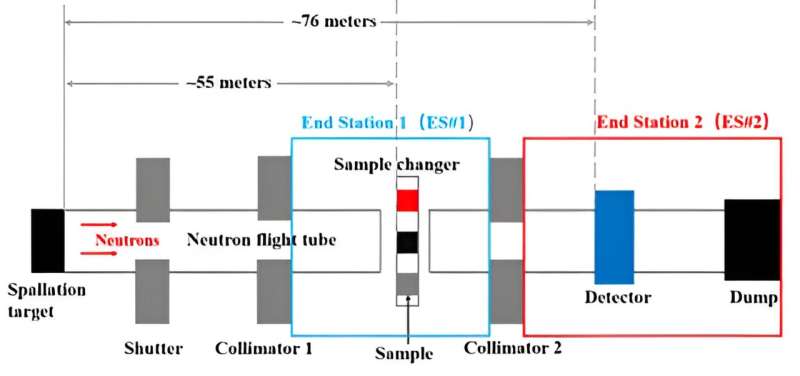by TranSpread

A feasibility study conducted at CSNS Back-n facility, recently published in Nuclear Science and Techniques, demonstrates a significant prospect of NRTA in nondestructive nuclide identification.
The study explores the use of NRTA, a nondestructive method for identifying elemental compositions, at the newly established Back-n time-of-flight facility. This facility operates with neutrons ranging from eV to 300 MeV, offering a broad spectrum for detailed analysis.
This research at CSNS Back-n, a collaborative effort involving multiple institutions, such as the Institute of High Energy Physics, Chinese Academy of Sciences, and the University of Science and Technology of China, marks a major advancement in the field of nondestructive material analysis.
The study utilizes the Back-n facility’s unique capabilities, operating across a broad neutron energy spectrum from eV to 300 MeV, enabling detailed and precise material analysis. This facility, a part of the large scientific and technological collaboration across China, brings together experts from various fields, including archaeometry, nuclear physics, and nuclear technology, to push the boundaries of nondestructive testing using NRTA.
The research involves conducting test experiments on various samples, demonstrating the feasibility of using NRTA for precise element and isotope identification. The study also delves into the potential applications of this method in various fields, including cultural heritage preservation and material characterization. Lead researchers Yong-Hao Chen and Jing-Yu Tang, and co-authors highlight the unique capabilities of the Back-n facility in advancing nondestructive techniques for material analysis.
The successful implementation of NRTA marks CSNS Back-n facility as a new standard for noninvasive material analysis. It presents an approach for accurately identifying materials without causing any damage or alteration, significantly impacting scientific research across multiple disciplines.

